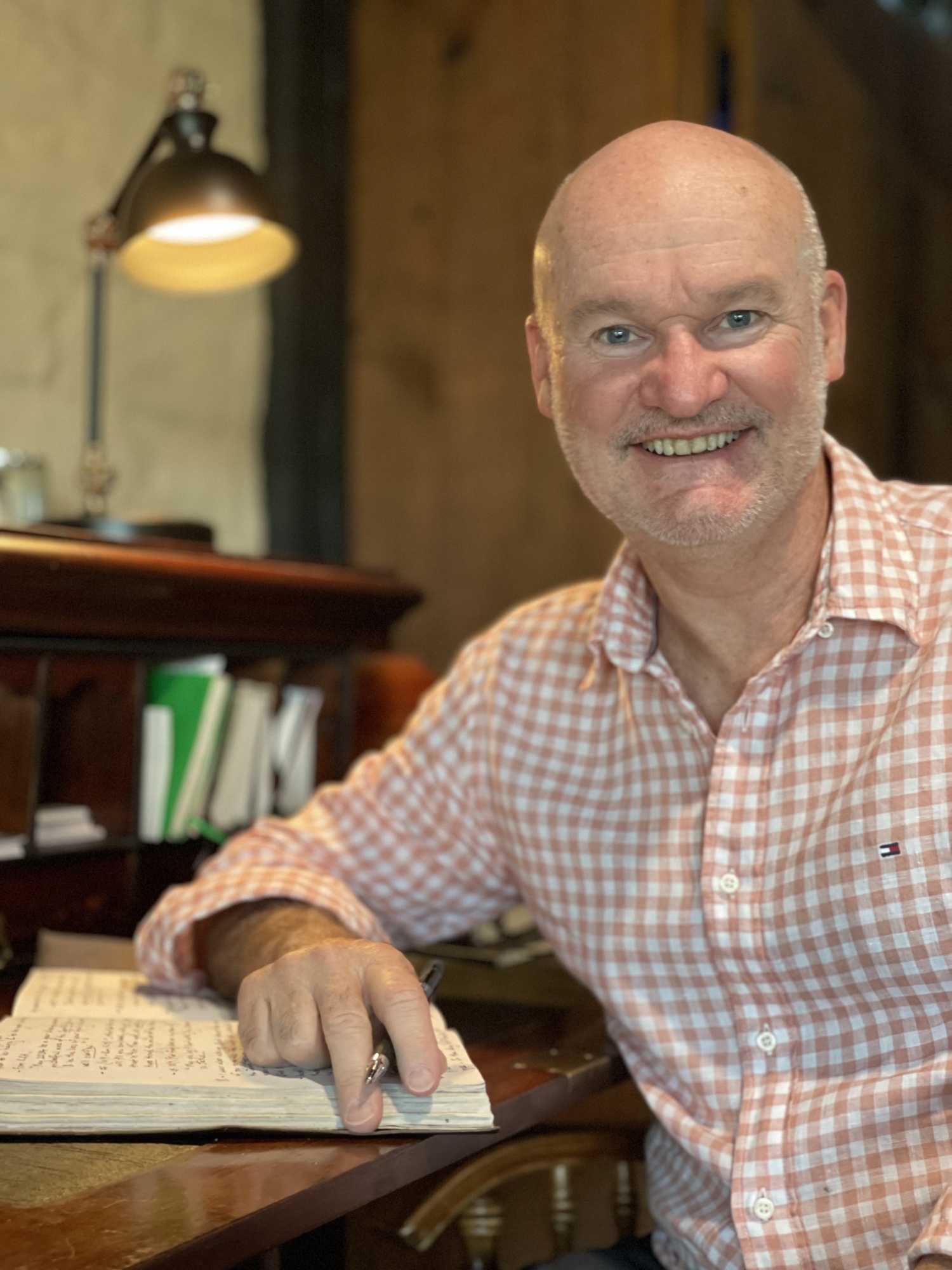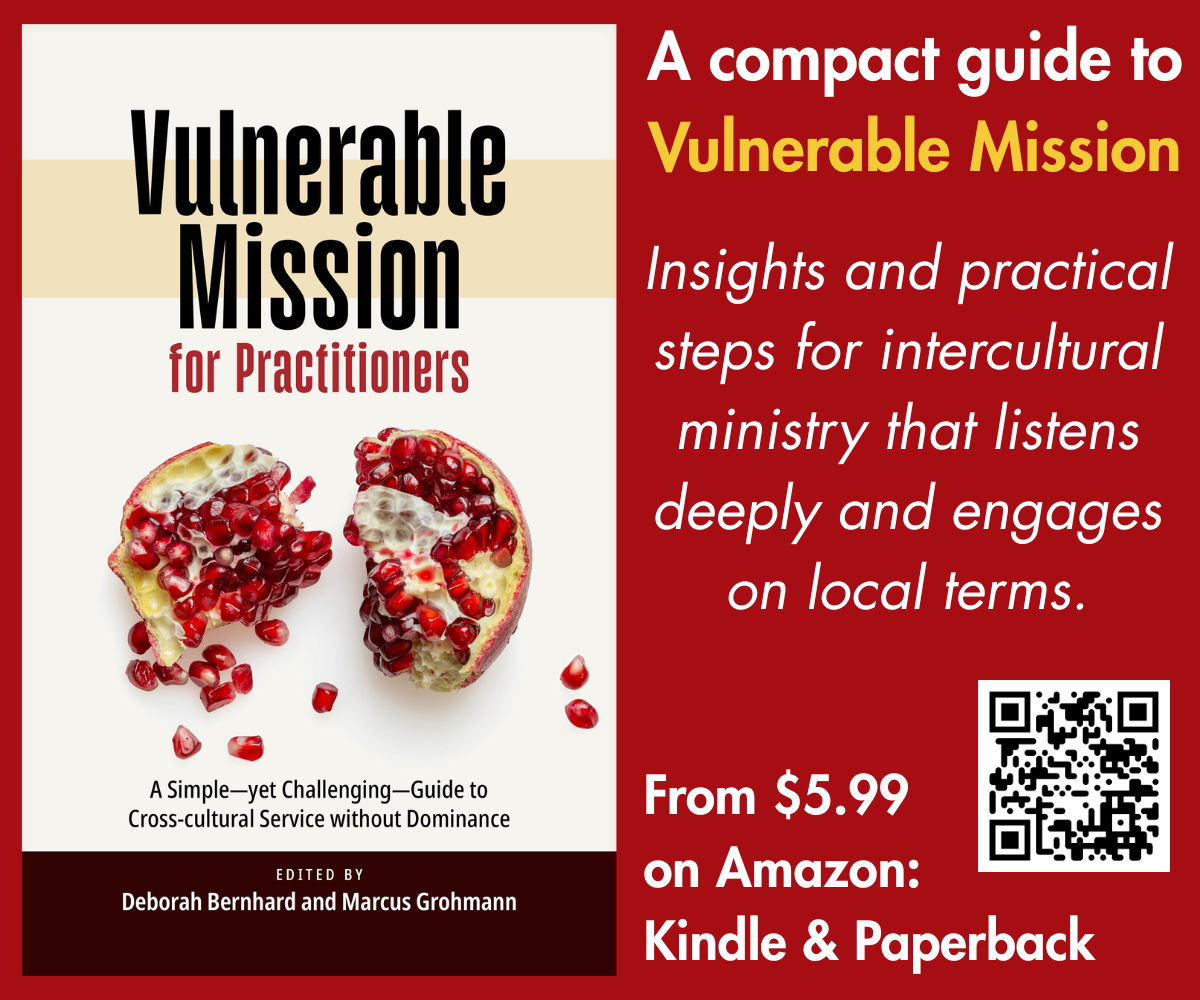EMQ » April – July 2025 » Volume 61 Issue 2

New Models of Mission
Summary: Whilst most agree that the future of mission involves global collaboration, the role of the Western church has become unclear. However, the biblical imperative is that all disciples make disciples locally and to the ends of the earth. Mission is a characteristic of a healthy church, wherever that church is in the world. Using his own experience as a pastor, Stewart Hunt illustrates the connection between a healthy church and mission, showing how biblical principles apply regardless of location.
By Stewart Hunt
I was privileged recently to attend the fourth Lausanne Congress in South Korea. One of the many highlights for me was the remarkable hospitality shown to us by our host nation. I was excited to be a part of such a diverse gathering where, hopefully, I could better understand the breadth of change around us and hear how God was at work in the midst of the global church. I know that I was not alone in this. I strongly sensed from those I spoke to a genuine spirit of collaboration and desire to grapple with the new polycentric world of mission in which we find ourselves.
Though I had tried to keep my expectations in check, I had also hoped (rightly or wrongly) that the place of the Western church serving alongside the Majority World church might be unambiguously affirmed. Whilst that role may encompass many things, I had further hoped that we might address the question of whether the mobilization and participation of cross-cultural workers from the West is still a valid contribution to world mission today?
As a pastor and missionary, I have encountered this question within both church and mission circles. My own journey with this issue has led me to believe that the continued mobilization of workers from Western churches is vital. But my belief stems from an understanding of the essential nature of the church rather than pragmatic discussions about the mobilization and deployment of missionaries (or paying for them), wherever they come from.
It is helpful to appreciate that this is not a new question but one which each generation must grapple with. Even at the first Lausanne Congress in 1974, there was a call by some for a moratorium on foreign missions.[i] The arguments for and against the continued sending of Western cross-cultural workers can be confusing. The sheer size of the task and number of Frontier Unreached Peoples,[ii] the nature of holistic mission, the need to express the diversity of the church, along with the sovereignty and creativity of God to use anyone, would seem to advocate for ongoing involvement. However, others suggest that the importance of local voices, imbalances of power, historic hurts, the emergence of diaspora mission and the possibilities of mobilizing same and near cultural workers, give us compelling reasons for Westerners not to go.
However, a number of these arguments appear to be rather pragmatic, as if the underlying question really is, “Does the sending of Western missionaries add value?” As we know, that can be a hard question to answer. A better approach perhaps would be to ask, “Is the mobilization of cross-cultural workers from the West optional?”
This challenges our most basic assumptions about our philosophy of ministry and the dynamics of ministry, more generally. It also invites us to ask, “Whose mission is it: God’s or ours?” If it is essentially God working through his church, then mission is ultimately the church being true to herself. As someone has said, “Mission is to the church as flames are to the fire.” It is the body of Christ enacting the will of Christ in her respective setting. It is the fruit that results from health. Mission is so intrinsic to the church’s being, that it will naturally manifest through any church consciously sitting under the headship of Christ and ignited by his Spirit.
Furthering the above analogy, should the Western church (or any church for that matter) exclude herself from activity beyond its cultural milieu, it would not only risk a diminishment of fruitfulness, but betray her essential nature. It would potentially extinguish her life as the flame ceases to burn.
Most would agree that mission is a key feature of any healthy church. But what does that look like in practice? And what is the interplay between a healthy church and missional engagement? That was the question that prompted me in 2008 to move from the wide world of mission into local church ministry.
My working assumption was that a church that was truly mobilized locally would produce more missionaries globally. Rather than seeing engagement with local mission as a distraction from global mission, I saw it as catalytic. It seemed to me that the fire that started in the church in Jerusalem, fueled it’s spread to Judea, Samaria, and the ends of the earth.[iii] This view was also influenced in part by a comment made by Michael Griffiths during a visit to my Bible College in my senior year. When it came to selecting missionary candidates, he always asked their pastor about their local church involvement. For, “… if they weren’t doing it here, what makes us think they’ll do it there?”[iv] My takeaway from this was that if they were doing it here, there’s more chance they’ll do it there!
However, our church had just been through a painful split and as lead pastor, I soon realized that the residual hurt was going to take time to heal. We were not just diminished in size but morale and capacity. I remember watching newcomers who had decided to check us out, leave quickly after the service, never to return. Whilst change would come, we first needed to address the health concerns.
What we really needed was a move of God in our midst. Change was not going to come from our own effort, but through prayerfully seeking him, forgiving, and asking for forgiveness. There were some basic issues to address as well. We needed to acknowledge how broad the gap had become between our sphere of concern and our sphere of influence. Gordon MacDonald pictured these spheres as separate but overlapping circles.[v] The split in the church had caused many to fixate on concerns over which they had very little control. What everybody did have a level of control over however, was their own growth and discipleship. A healthy church, after all, is not the sum total of healthy programs and systems, but the health of the individuals who make up the church.
So, over time, we prioritized discipleship. We began a mid-week discipleship school to supplement our Sunday teaching and the small groups that already existed. This enabled us to address issues as diverse as finding freedom in Christ,[vi] developing a spirituality rooted in emotional health,[vii] understanding anxiety and depression or explaining God’s good news to a secular, Buddhist, or Muslim enquirer.
In terms of stimulating ministry, we introduced the concept Henry Blackaby championed of “looking to see where God was at work.”[viii] After all, the place where God was at work would surely be the juncture where concerns and influence overlap. Whilst this included seeing needs within the church and offering to help, it also included validating connections that almost everyone already had. It encouraged them to see five common areas where God loved to work. I would frequently count them off on one hand: family, friends, neighbors, work or school mates, and people you meet in everyday life. I recall one of our elders commenting one day, “I don’t know why, but for some reason I had never thought that witness to my own family was legitimate evangelism.”
Even then, we found that our locality was hard ground to sow seeds in. The opposition to the Word of God that Jesus spoke of in the Parable of the Sower[ix] was very real. We needed encouragement. So, I reached out to mission organizations with whom I had a connection, asking them to bring us stories about the power of the gospel that would ultimately inspire faith. Whilst I still believed that local engagement would eventually produce global engagement, I realized the need for global to first inspire local.
Although we had a church teaching schedule in place, I encouraged flexibility to accommodate opportunities for missionaries to share. We accepted last-minute offers of speakers from many missionary organizations and over time built a reputation as a good option for visiting speakers. I recall a congregational member commenting one day, “We’ve had three international directors from three different organizations here in the last twelve months. How did we get so lucky?”
It wasn’t just the mission organizations that noticed our growing heart for mission. A number of home-based missionaries found a warm welcome and kindred spirit at the church. They would often apologize and seek to assure me that they didn’t want to be a drain on the church’s finances. However, I knew that their presence amongst us was part of God’s plan to enlarge our understanding of mission. I used to assure them, “I believe you will give to us more than we could ever give to you.”
Whilst for some years it felt like we were just attending to the basics, we did start to see change. By God’s grace, healthy disciples brought vitality back to the church. Morale improved and people started to feel comfortable once more about inviting others. There was a renewed spirit of anticipation in our Sunday gatherings and a new freedom in our worship. New ministries were birthed, along with a culture of volunteering. An internship was launched to accommodate the development of emerging leaders. The church started to feel different. As we outgrew our buildings, a new campus was started.
With all of this happening, our heart for both local and global mission also grew. There was always an intentionality to it, but eventually it took on a life of its own. We began by emphasizing everyone’s part in local mission. Some years ago, I heard a pastor describe his church as a mini-mission organization. That imagery also worked for us and made sense of our studies in Acts, where the mission mandate was for the whole church.
Like many churches, we had framed pictures in the hallway of those from our midst who God had sent to other geographical locations to serve cross-culturally. However, the last frame – a mirror – reinforced everyone’s place in mission. We continued to encourage people not to overlook the people who are in front of you. That is your sphere of influence. That is where God is at work.
In time, we saw that local awareness of God’s mission and engagement with that did lead to greater global interest. For instance, whilst acknowledging the need to grapple with cultural distance in evangelism and the usefulness of tools such as Ralph Winter’s E-scale,[x] the reality facing many in our church was that cultural distance was no longer linked to geographical distance. They were on work calls via Zoom to India during the week and helping Syrian refugees settle into the local neighborhood on weekends. Their reality was that the local and the global were becoming blurred, and their understanding of God’s mission was growing experientially.
It was important to highlight that whilst some people were indeed arriving on our shores, they were often coming from areas of great need. So, rather than concluding that this meant there was no longer a need to share the love of God offshore, their arrival reminded us why we must. Like many churches, we fostered this understanding by encouraging short-term trips to better understand what God is doing outside Australia. I had the privilege of leading many of these trips. Over time, I estimate that about one sixth of the church had participated in a short-term trip.
We also saw God touch the hearts of some people such that they wanted to become long-term cross-cultural workers. Like conversion, sanctification, and body life, the mobilization of a cross-cultural missionary is ultimately the work of God’s Spirit.[xi] It’s not a practical response driven by perceived need but a spiritual dynamic, evidencing the work of God amidst his people.
So, some 14 years later, what did I learn? As a pastor, it is sometimes genuinely hard to see the forest for the trees. Church life has its seasons. It can be messy. Not everybody appreciated our missions focus or actively pursued this agenda. Like many churches, we had our struggles with change and leadership. At any time and according to any given church health metric, I could identify room for growth. Yet looking back, God was definitely at work. And what we saw God’s Spirit do over time shouldn’t have surprised us. In the gospels and the book of Acts we see a very simple model. Jesus makes disciples and commands that – empowered by his Spirit – we keep doing it. A church is born and more mission results. In many respects this was our experience also. To put it simply, the focus of making healthy disciples revitalized the church and led to a more robust mission.
Whilst not much of this is new, for me it was now tested by practice. As I transitioned back into the world of mission, I brought with me a fresh conviction regarding this simple dynamic and what it might mean for various roles.
For mission agencies and mobilizers, as we take an active interest in the health and local mission of national churches, we will see the flow-on effect for global mission. Whilst the prophetic voice is needed, it is the pastoral approach that often flushes out the John-Mark[xii] in every church. We need to prepare for the long game.
For church leaders, I can testify that a corporate heart for God’s global work does not have to distract from his local initiatives. Rather, see what he is doing globally as an inspiration for local endeavors. When church members sense a stirring to go further afield, trust that this is God’s Spirit at work, a sign of health and a cause for celebration.
As the church becomes increasingly global in its representation, we should expect to see that mirrored missionally. Wherever there is health within God’s church, mission will be present. This is why we must yearn for continued involvement from the Western church and, indeed, any church anywhere in the world.
Ultimately, our solutions for this next era of mission will be found collaboratively. Just as the church is the essential ingredient for robust mission, so mission is the natural result of a healthy global church. No matter where we come from, West or non-West, Global North or Global South, realizing that mission is an inextricable marker of church health will provide us with a foundation for collaboration that transcends history, geography, economics, and ethnicity.

Stewart Hunt was formerly the national director for Interserve Australia and prior to that, lead pastor of The Vine Baptist Church in Melbourne, Australia, for 14 years. He has served and consulted with several missions including Operation Mobilisation, Pioneers, and Hellenic Ministries. He is passionate about the rise of the Majority World church and diaspora mission, and believes the Western church still has a vital role to play.
[i] Lausanne Movement, “Story of Lausanne,” https://lausanne.org/about-the-lausanne-movement.
[ii] Joshua Project, “Frontier Unreached Peoples,” https://joshuaproject.net/frontiers.
[iii] Acts 1:8.
[iv] Michael Griffiths, untitled lecture, Bible College of Victoria, Melbourne Victoria, 1992.
[v] Gordon MacDonald, Ordering Your Private World (T. Nelson Publishers, 1997).
[vi] Freedom in Christ Ministries, “The Freedom in Christ Course,” https://www.ficm.org.
[vii] Peter Scazzero, Emotionally Healthy Spirituality (Zondervan, 2017).
[viii] Henry Blackaby, Experiencing God: Knowing and Doing the Will of God (Broadman and Holman, 2021).
[ix] Matthew 13:1–23.
[x] Ralph D. Winter and Steven C. Hawthorne, eds, Perspectives on the World Christian Movement: A Reader, 4th ed(William Carey Library, 2009).
[xi] John 3:8, New Living Translation.
[xii] Acts 15:39 and 2 Timothy 4:11.
EMQ, Volume 61, Issue 2. Copyright © 2025 by Missio Nexus. All rights reserved. Not to be reproduced or copied in any form without written permission from Missio Nexus. Email: EMQ@MissioNexus.org.







Responses